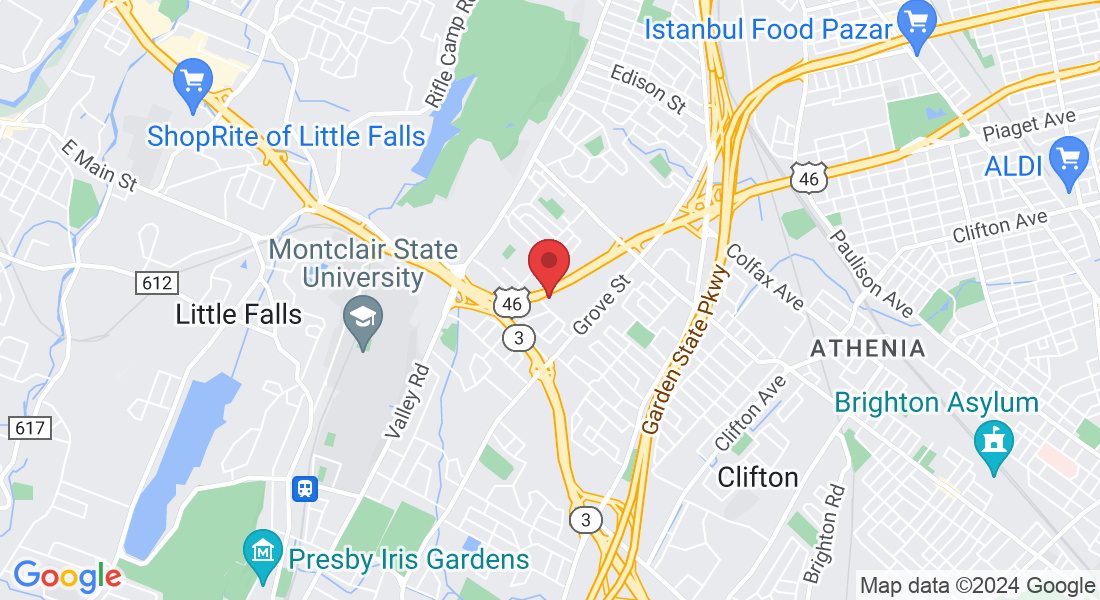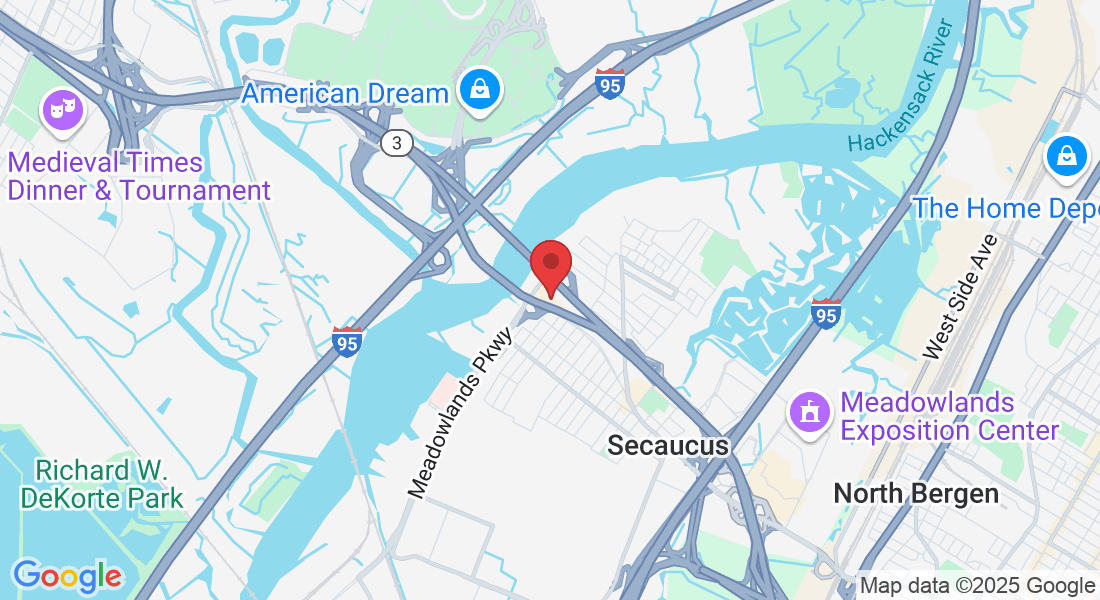New Jersey Rehab Experts
Specializing in comprehensive orthopedic care, New Jersey Rehab Experts offers a wide range of services including Physical Therapy, Sports Physical Therapy, Dry Needling, Chiropractic Care, Neuropathy Treatment, Pain Management, and Manual Therapy. Our state-of-the-art facility is staffed by board-certified therapists dedicated to delivering top-tier care, ensuring you achieve optimal recovery and wellness.
Clinic Located in Newport , Hillsborough and Clifton
Genuine Feedback from
Our Patients
Our Affiliations

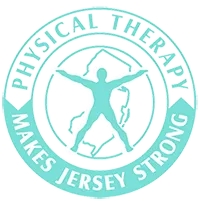




Explore Our Diverse Range of Disciplines
Discover a world of exceptional care customized for all ages! Our dedicated professionals deliver top-notch medical attention, expert rehabilitative therapy, and warm companion care for adults, seniors, and young patients. Experience personalized healthcare with a heart!

Orthopedic Physical Therapy
At New Jersey Rehab Experts our Orthopedic Physical Therapy program is designed to help patients recover from musculoskeletal injuries, surgeries, and chronic conditions affecting the bones, joints, muscles, ligaments, and tendons. Whether you're healing from a sports injury, managing arthritis, or recovering after orthopedic surgery, our expert therapists create personalized treatment plans to restore mobility, reduce pain, and improve overall function. We use evidence-based techniques such as manual therapy, therapeutic exercises, joint mobilization, dry needling, ultrasound, and neuromuscular re-education
to accelerate your recovery and prevent future injuries.
Our goal is to get you moving confidently and pain-free—whether you're getting back to the gym, the job site, or simply your everyday routine.
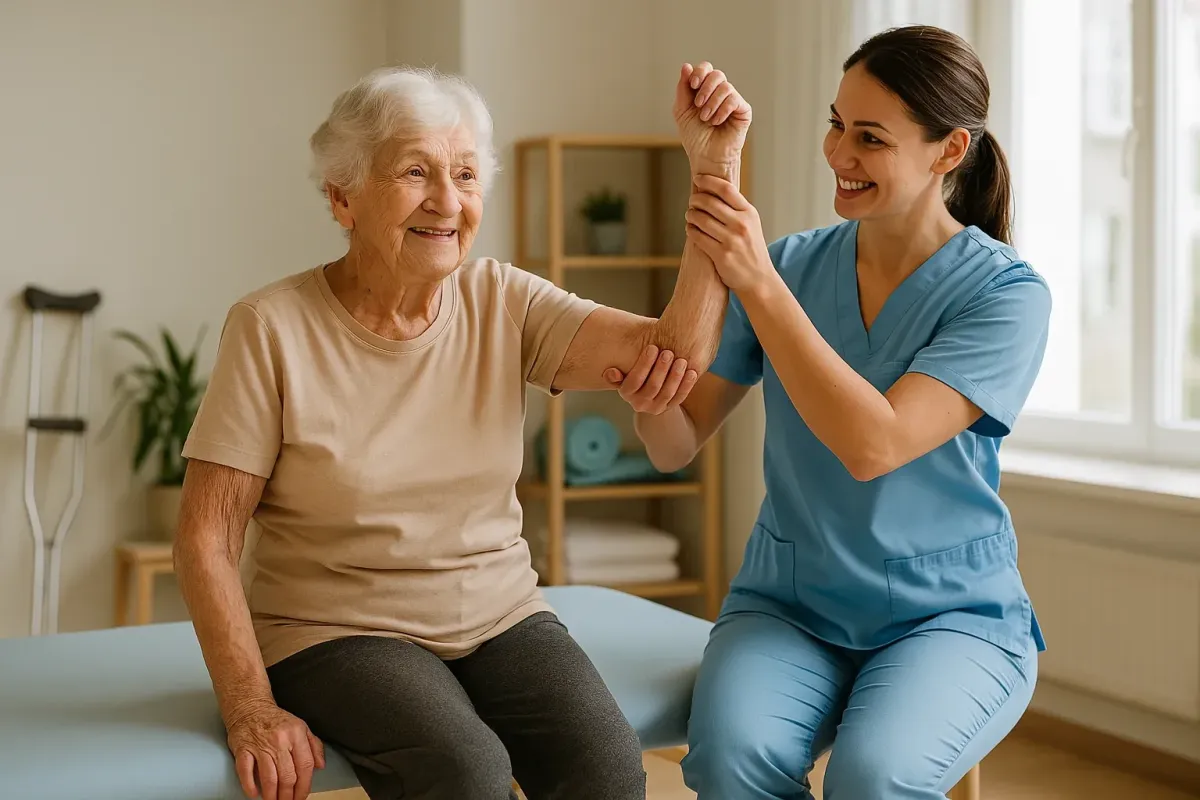
Geriatric Physical Therapy
Our Geriatric Physical Therapy services are tailored to meet the unique needs of older adults. As we age, our bodies undergo natural changes that can affect balance, strength, mobility, and overall independence. Our experienced therapists are here to help seniors stay active, safe, and confident in their daily lives.
We specialize in the prevention and treatment of age-related conditions such as osteoporosis, arthritis, joint replacements, balance disorders, and general deconditioning. Our personalized therapy programs focus on restoring strength, improving flexibility, reducing pain, and preventing falls.
Our geriatric therapy goals include: Enhancing mobility and functionPreventing falls and promoting safetyManaging chronic painIncreasing independence in daily activitiesSupporting recovery from surgery or hospitalization. We take a compassionate, patient-centered approach to care—empowering seniors to maintain a higher quality of life and remain active within their homes and communities.
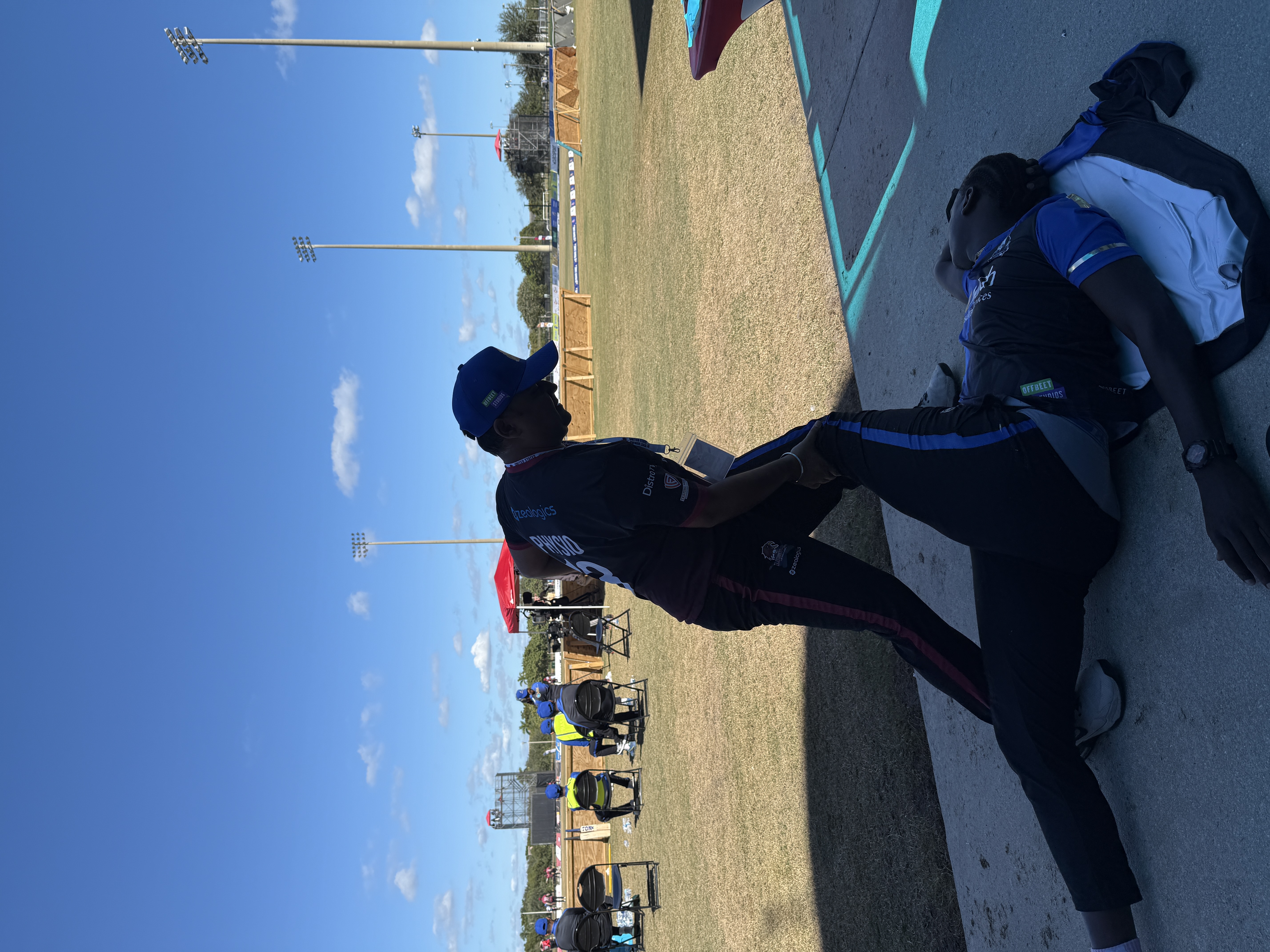
Sports Physical Therapy
At New Jersey Rehab Experts our Sports Physical Therapy program is built for athletes of all levels—from weekend warriors to professional players. Whether you're recovering from an injury, enhancing performance, or aiming for a safe return to sport, we’ve got your back (and knees, shoulders, ankles… you name it!).
Our sports rehab specialists use advanced techniques and evidence-based protocols to treat common athletic injuries such as ACL tears, rotator cuff strains, tennis/golfer’s elbow, sprains, tendonitis, and more We combine manual therapy, functional training, neuromuscular re-education, strength conditioning, dry needling, and return-to-sport testing to help you recover faster and perform better.

Vestibular Rehabilitation Therapy (VRT)
Feeling dizzy, off-balance, or lightheaded? You're not alone—and you don’t have to live with it. At
New Jersey Rehab Experts our Vestibular Rehabilitation Therapy (VRT) is designed to help you regain control, stability, and confidence in your everyday movements. VRT is a specialized form of physical therapy aimed at treating disorders of the inner ear and balance system , such as vertigo, BPPV (Benign Paroxysmal Positional Vertigo), Meniere’s disease, post-concussion dizziness, and general imbalance. These conditions can make even simple tasks feel overwhelming—but with the right therapy, relief is possible. Our skilled therapists perform a thorough assessment to identify the root cause of your symptoms and develop a custom treatment plan using: Balance and gaze stabilization exercises Canalith repositioning maneuvers (like the Epley maneuver) Habituation and desensitization techniques Fall prevention strategie
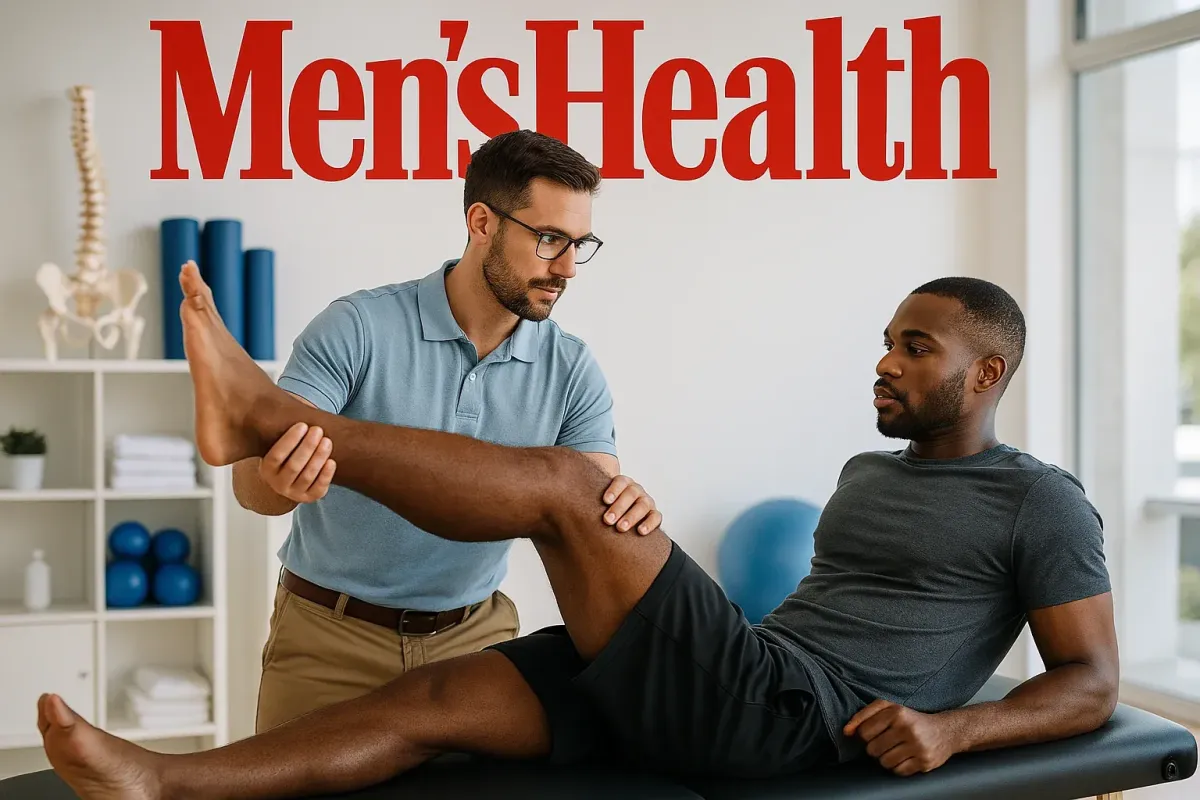
Men's Health Physical Therapy (Pelvic Health PT)
Pelvic health isn’t just a women’s issues men experience it too and we’re here to help. At New Jersey Rehab Experts our Men’s Health Physical Therapy
program is designed to treat a wide range of pelvic floor dysfunctions that can impact comfort, confidence, and quality of life. Our expert therapists offer
discreet, one-on-one care for men experiencing: Pelvic painUrinary urgency, frequency, or leakagePost-prostatectomy rehabilitationErectile dysfunctionConstipation and bowel issuesCore weakness or abdominal pressure Through targeted manual therapy, pelvic floor retraining, biofeedback, breathing techniques, and posture correction, we help restore normal function and reduce symptoms—without surgery or medication. Why it matters: Pelvic floor dysfunction can be frustrating, but it’s also very treatable. We take a judgment-free, evidence-based approach to help men feel strong, supported, and back in control of their bodies. Take the first step toward healing—you don’t have to suffer in silence
.
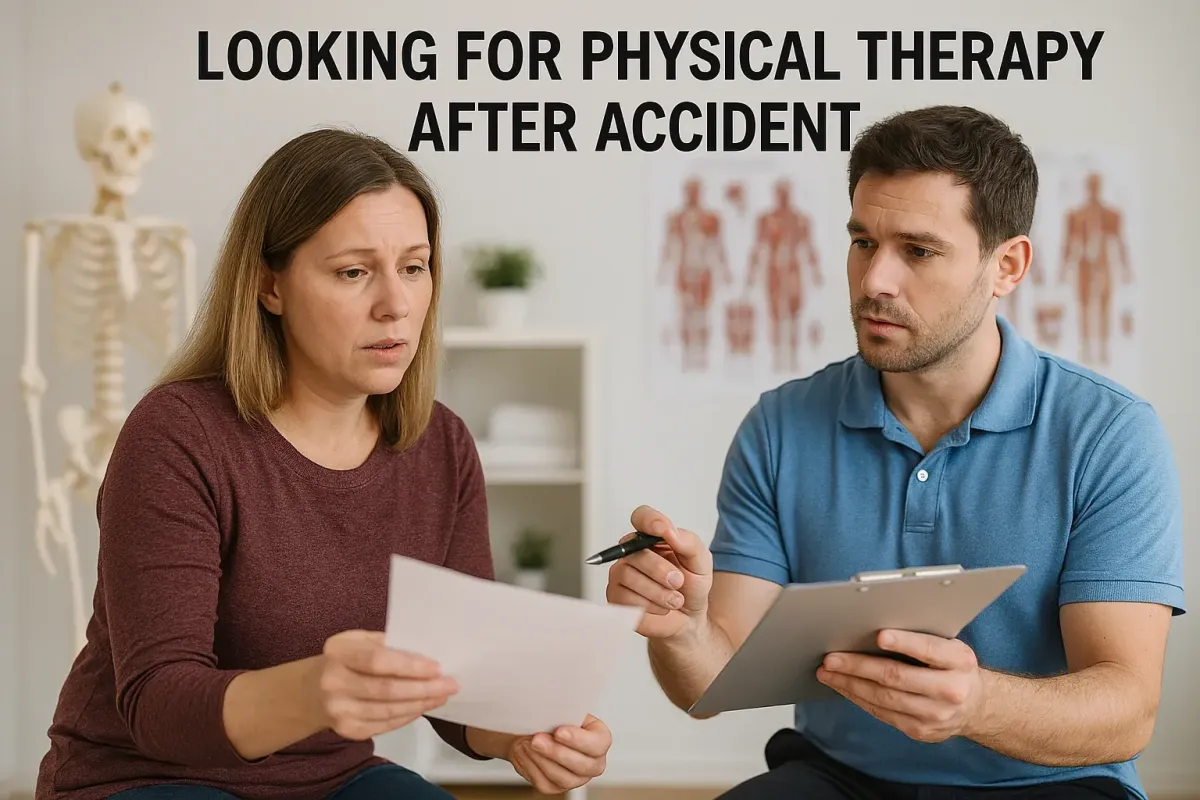
Motor Vehicle & Work Injury Rehab Specialist
At New Jersey Rehab Experts, we specialize in
Motor Vehicle and Work Injury Rehabilitation, helping patients recover from car accidents and workplace injuries with expert, personalized care. Our team treats conditions such as whiplash, low back pain, joint injuries, concussions, and soft tissue damage, using evidence-based therapy to reduce pain, restore function, and support long-term recovery. We work closely with physicians, attorneys, and insurance providers to ensure proper documentation and seamless coordination of care. Whether you're dealing with a workers' comp case or personal injury claim, our goal is to get you back to work, life, and movement—safely and confidently.
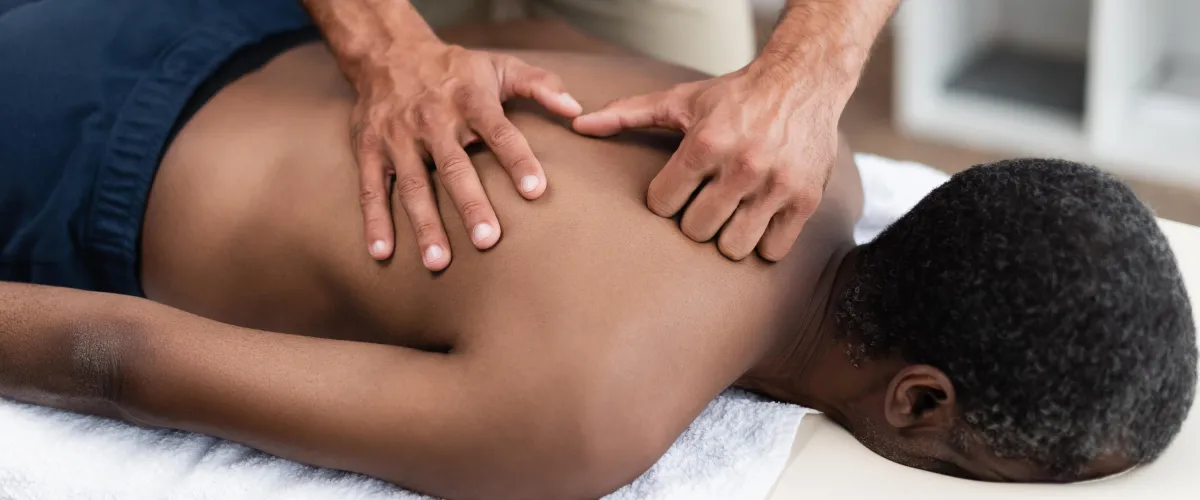
Manual Therapy
Looking for a hands-on approach that goes beyond basic physical therapy?
Manual Therapyoffers targeted, expert techniques designed to relieve pain, improve mobility, and accelerate healing—naturally. This isn’t your average treatment. Imagine combining the precision of Mulligan Mobilizations with the posture-correcting power of the McKenzie Method, or experiencing the rapid results of High-Velocity Thrust Techniques and Spinal Manipulation to unlock stiff joints. Add in the deep-tissue benefits of Myofascial Release (MFR)
and the dynamic support of Kinesiology and Sports Taping, and you’ve got a comprehensive system that helps you move better, recover faster, and feel your best. Whether you're an athlete, a desk worker, or simply tired of chronic pain—this is where real, lasting relief begins.
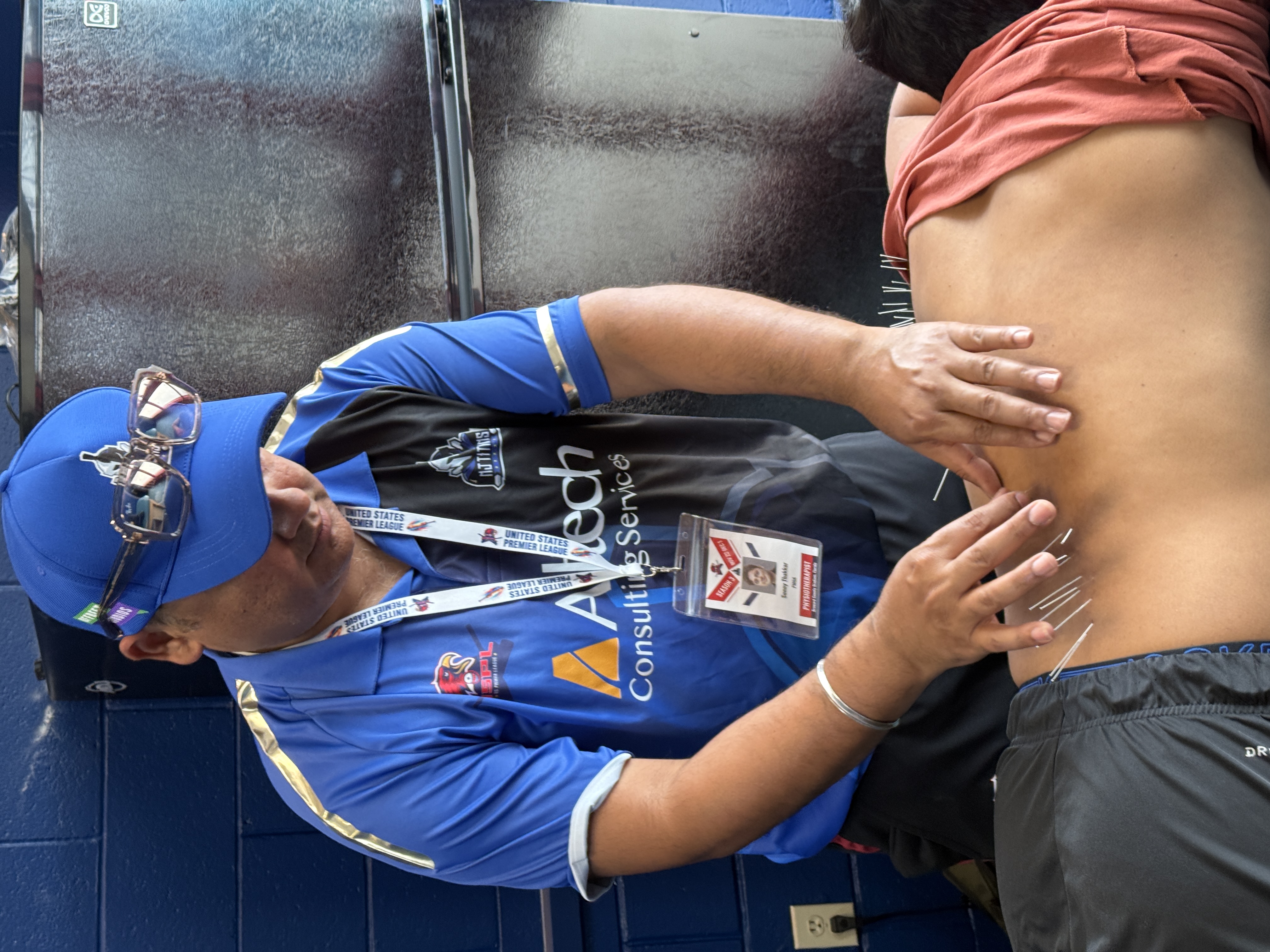
Dry Needling
Dry Needling
is a modern, evidence-based treatment technique used by licensed physical therapists to target trigger points—tight knots in muscles that cause pain and restrict movement. By inserting thin, sterile needles into these areas, dry needling helps release muscle tension, improve blood flow, reduce pain, and restore normal function. It is commonly used to treat conditions like back and neck pain, tendonitis, headaches, sciatica, and sports-related injuries. Unlike acupuncture, which is based on traditional Chinese medicine, dry needling is grounded in Western anatomical and neurophysiological principles, making it a safe and effective option for musculoskeletal pain and dysfunction.
Our Advantages
Specialized Programs for Every Need
From orthopedic rehab and sports therapy to vestibular, pelvic health, and post-injury recovery, we provide comprehensive, patient-focused solutions.
State-of-the-Art Techniques & Technology
We use cutting-edge treatments like dry needling, spinal manipulation, Mulligan & McKenzie techniques, Fit3D scans, Shockwave Therapy , Cupping and more to accelerate healing.
Personalized One-on-One Care
Every patient receives individualized treatment plans with hands-on attention to ensure faster recovery and long-term results.
Trusted by Athletes & Community Leaders
Official providers for multiple cricket teams and a member of respected healthcare associations—our reputation speaks for itself.
Multiple Convenient Locations Across NJ
With clinics in Jersey City, Secaucus, Clifton , and beyond, we’re always within reach—offering flexible scheduling and bilingual support.
Seamless Support for Injury Claims & Recovery
We coordinate care with attorneys, physicians, and insurers for patients recovering from motor vehicle or work-related injuries, ensuring smooth documentation and stress-free rehab.
Meet Our Team

Sunny Thakkar PT, MS ( Exercise Physiologist)
Physical Therapist

Ashish Sinha, PT, DPT
Physical Therapist

Dr. Rohit Farzala PT, DPT
Physical Therapist
About Us
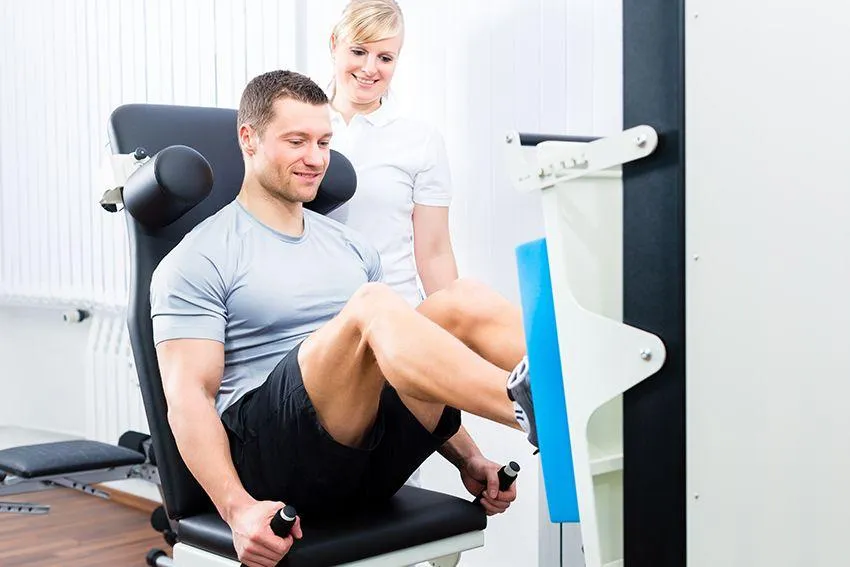

Experience rapid rejuvenation as our specialist team harnesses the power of advanced healing tech to erase pain with ease. We dive deep into your world, assessing every piece of the puzzle—stress at work, life pressures, physical health, nutrition, genes, posture, and even emotional ties—crafting a tailor-made wellness blueprint that's as unique as you are. With our dedicated holistic touch, we don't just treat symptoms; we empower you to embrace a pain-free, harmonious life.
Ask a Question
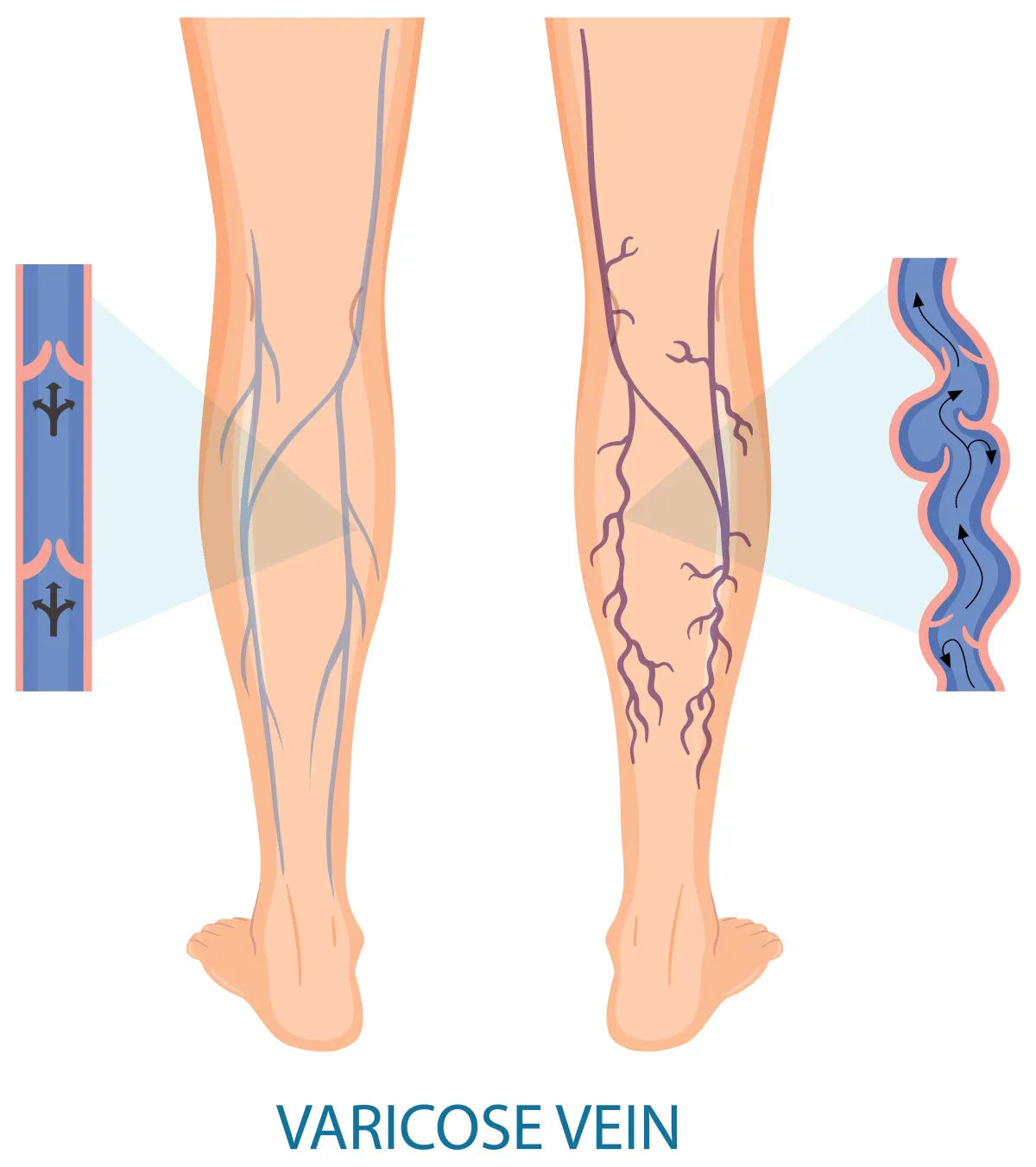
10 Signs You Need to See a Leg Doctor: Don’t Ignore These Warning Symptoms!
10 Signs You Need to See a Leg Doctor: Don’t Ignore These Warning Symptoms!
The earlier you recognize potential issues, the better chance you have at maintaining mobility and overall health. Ignoring discomfort can lead to severe complications down the road, impacting not only your legs but your entire quality of life. In this article, we'll explore the ten signs that suggest it’s time to seek professional help. From feeling persistent fatigue in your legs to noticing irregular swelling, understanding these symptoms can empower you to take action and safeguard your health. Let’s dive into the essential indicators that call for medical attention, ensuring you stay active and pain-free for years to come!
Common Leg Problems and Their Causes
Leg problems can stem from a variety of sources, each with its unique set of symptoms and complications. Understanding the root causes of leg issues is crucial for identifying when to seek medical advice. Often, leg pain and discomfort are attributed to overuse, injury, or underlying medical conditions. Conditions such as arthritis, tendinitis, and muscle strains are common culprits, leading to chronic pain and mobility issues. These problems can arise from rigorous physical activities, sports injuries, or even day-to-day activities that place stress on the legs.
Circulatory issues also play a significant role in leg health. Peripheral artery disease (PAD) and deep vein thrombosis (DVT) are serious conditions that affect blood flow to and from the legs. PAD is caused by the narrowing of arteries, reducing blood flow and leading to leg pain, especially during physical activities. DVT, on the other hand, involves blood clots forming in the deep veins, which can cause pain, swelling, and potential complications if the clot travels to the lungs. These conditions require prompt medical attention to prevent severe outcomes.
In addition to physical and circulatory problems, nerve-related issues can lead to significant leg discomfort. Sciatica, for instance, is characterized by pain that radiates from the lower back down to the legs, caused by compression or irritation of the sciatic nerve. Diabetic neuropathy, a common complication of diabetes, involves nerve damage that results in pain, tingling, and numbness in the legs. Identifying these problems early and seeking appropriate treatment can prevent further deterioration and improve quality of life.
Sign 1: Persistent Pain in the Legs
Experiencing persistent pain in the legs is one of the most noticeable signs that something might be wrong. This type of pain can vary in intensity and duration, often disrupting daily activities and reducing overall mobility. Chronic leg pain may be a result of various conditions, including muscle strains, ligament injuries, or underlying medical issues such as arthritis. For many, this pain can begin as a minor annoyance that progressively worsens, making it essential to pay attention to its onset and progression.
Muscle strains and injuries often result from overexertion or improper movement during physical activities. These injuries can cause sharp, localized pain that intensifies with movement. Conversely, conditions like arthritis can lead to a more diffused, chronic pain that persists over time. Arthritic pain is typically accompanied by stiffness and swelling in the joints, making movement challenging and uncomfortable. Recognizing the difference between temporary discomfort and persistent pain is crucial for determining when to seek medical intervention.
Ignoring persistent leg pain can lead to worsening symptoms and potential complications. Chronic pain may indicate underlying issues that require professional evaluation and treatment. For instance, untreated arthritis can lead to joint damage and decreased mobility, while ignoring muscle injuries can result in further strain and prolonged recovery times. Consulting a leg doctor can help diagnose the cause of the pain, provide appropriate treatment, and prevent further health deterioration.
Sign 2: Swelling or Inflammation
Swelling or inflammation in the legs is another significant warning sign that should not be ignored. This symptom can arise from a variety of causes, including injury, infection, or chronic medical conditions. Swelling, also known as edema, occurs when excess fluid accumulates in the tissues, leading to noticeable puffiness and discomfort. Inflammation is a natural response to injury or infection, characterized by redness, warmth, and swelling in the affected area. Both conditions can cause pain and hinder mobility.
Injuries such as sprains, fractures, or muscle tears are common causes of leg swelling and inflammation. These injuries often result from accidents, falls, or intense physical activities, leading to localized swelling and pain. Additionally, infections in the leg, such as cellulitis, can cause significant inflammation and discomfort. Cellulitis is a bacterial infection that affects the skin and underlying tissues, leading to redness, swelling, and tenderness. Prompt medical treatment is essential to prevent the infection from spreading and causing further complications.
Chronic conditions like heart failure, kidney disease, and venous insufficiency can also lead to persistent leg swelling. Venous insufficiency occurs when the veins in the legs are unable to efficiently return blood to the heart, leading to fluid buildup and swelling. Heart failure and kidney disease can cause systemic fluid retention, resulting in noticeable swelling in the legs and other parts of the body. Recognizing and addressing these underlying conditions is crucial for managing symptoms and preventing further health issues.
Sign 3: Numbness or Tingling Sensations
Numbness or tingling sensations in the legs are often indicative of nerve-related issues that require medical attention. These sensations, commonly referred to as paresthesia, can be caused by various factors, including nerve compression, injury, or underlying medical conditions. Paresthesia can range from mild tingling to complete numbness, affecting your ability to feel and move your legs properly. Identifying the cause of these sensations is essential for determining the appropriate course of action.
One common cause of numbness and tingling in the legs is sciatica. Sciatica occurs when the sciatic nerve, which runs from the lower back down to the legs, is compressed or irritated. This condition can result in sharp, shooting pain, as well as numbness and tingling that radiates down the leg. Sciatica is often caused by herniated discs, spinal stenosis, or other spinal issues that place pressure on the nerve. Seeking medical treatment can help alleviate symptoms and address the underlying cause of nerve compression.
Peripheral neuropathy is another condition that can lead to numbness and tingling in the legs. This condition involves damage to the peripheral nerves, which are responsible for transmitting signals between the central nervous system and the rest of the body. Diabetes is a common cause of peripheral neuropathy, leading to nerve damage and resulting in pain, tingling, and numbness in the legs. Early diagnosis and management of peripheral neuropathy are crucial for preventing further nerve damage and maintaining leg function.
Sign 4: Difficulty Walking or Bearing Weight
Experiencing difficulty walking or bearing weight on your legs is a clear indication that something might be wrong. This symptom can manifest in various ways, including weakness, instability, or pain that worsens with movement. Difficulty walking can significantly impact your daily activities and overall quality of life, making it essential to identify the underlying cause and seek appropriate medical intervention.
Musculoskeletal issues, such as ligament injuries, tendonitis, or fractures, are common causes of difficulty walking. These injuries can result from accidents, falls, or overuse during physical activities, leading to pain and instability in the affected leg. For instance, a torn ligament in the knee can cause significant pain and make it challenging to bear weight on the leg. Seeking medical evaluation and treatment is crucial for proper healing and preventing further complications.
Neurological conditions can also contribute to difficulty walking or bearing weight on the legs. Conditions such as multiple sclerosis (MS) or stroke can affect the nervous system, leading to muscle weakness, coordination issues, and balance problems. These conditions require specialized medical care to manage symptoms and improve mobility. Early intervention and rehabilitation can help enhance leg function and overall quality of life.
Sign 5: Skin Changes or Rashes
Noticing unusual skin changes or rashes on your legs can be a sign of underlying health issues that require medical attention. Skin changes can include discoloration, redness, sores, or rashes that do not heal or worsen over time. These symptoms can result from various conditions, including infections, circulatory problems, or chronic diseases. Identifying the cause of these skin changes is essential for determining the appropriate treatment and preventing further complications.
Infections such as cellulitis or fungal infections can cause noticeable skin changes and rashes on the legs. Cellulitis is a bacterial infection that affects the skin and underlying tissues, leading to redness, swelling, and tenderness. Fungal infections, such as athlete's foot, can cause itchy, red, and flaky skin, often between the toes or on the soles of the feet. Prompt medical treatment is crucial for addressing these infections and preventing them from spreading or worsening.
Circulatory issues, such as chronic venous insufficiency or peripheral artery disease (PAD), can also lead to skin changes on the legs. Chronic venous insufficiency occurs when the veins in the legs are unable to efficiently return blood to the heart, leading to fluid buildup and skin changes such as varicose veins, discoloration, and ulcers. PAD, on the other hand, involves the narrowing of arteries, reducing blood flow to the legs and causing symptoms such as sores or ulcers that do not heal. Managing these conditions is essential for preventing severe complications and maintaining leg health.
Sign 6: Varicose Veins and Their Implications
Varicose veins are enlarged, twisted veins that often appear on the legs and can indicate underlying circulatory issues. These veins are usually blue or purple and can cause discomfort, pain, and swelling. Varicose veins result from weakened or damaged valves in the veins, which allow blood to pool and the veins to become enlarged. While varicose veins are often considered a cosmetic concern, they can also lead to more serious health problems if left untreated.
The presence of varicose veins can indicate chronic venous insufficiency, a condition where the veins struggle to return blood to the heart efficiently. This condition can lead to symptoms such as swelling, pain, and skin changes in the affected area. In severe cases, chronic venous insufficiency can result in ulcers or sores that are challenging to heal. Seeking medical evaluation and treatment for varicose veins can help manage symptoms and prevent further complications.
Treatment options for varicose veins vary depending on the severity of the condition. Conservative treatments include lifestyle changes, such as elevating the legs, wearing compression stockings, and avoiding prolonged periods of standing or sitting. In more severe cases, medical procedures such as sclerotherapy, laser therapy, or vein stripping may be necessary to remove or close off the affected veins. Consulting a leg doctor can help determine the most appropriate treatment plan for managing varicose veins and improving leg health.
When to Seek Immediate Medical Attention
While many leg-related symptoms can be managed with lifestyle changes and medical treatment, certain signs require immediate medical attention. Recognizing these urgent symptoms and seeking prompt care can prevent severe complications and ensure the best possible outcomes. One such symptom is sudden, severe leg pain that does not improve with rest or over-the-counter pain relievers. This type of pain can indicate a serious condition, such as a blood clot, infection, or injury, that requires immediate medical evaluation.
Another urgent symptom is sudden swelling or redness in one or both legs, especially if accompanied by pain or warmth. These signs can indicate deep vein thrombosis (DVT), a serious condition where a blood clot forms in the deep veins of the leg. If left untreated, the clot can travel to the lungs and cause a life-threatening pulmonary embolism. Seeking immediate medical attention for these symptoms is crucial for preventing severe complications and ensuring proper treatment.
Other signs that require immediate medical attention include sudden numbness or weakness in the legs, difficulty walking, or loss of bladder or bowel control. These symptoms can indicate a neurological emergency, such as a stroke or spinal cord injury, and require prompt medical intervention. Recognizing these signs and seeking immediate care can significantly improve outcomes and prevent long-term health issues.
Conclusion: Prioritizing Your Leg Health
Your legs play a vital role in your overall mobility and quality of life, making it essential to pay attention to any warning signs that may indicate a problem. Recognizing the ten signs that suggest it’s time to see a leg doctor can help you take proactive steps to safeguard your leg health and prevent severe complications. From persistent pain and swelling to unusual skin changes and difficulty walking, these symptoms should not be ignored.
Taking action early and seeking professional medical advice can lead to a timely diagnosis and effective treatment, improving your chances of a full recovery and maintaining your mobility. By prioritizing your leg health, you can ensure that you remain active and pain-free for years to come. Remember, your legs carry you through life, so it's crucial to listen to the signals they send and take appropriate measures to keep them healthy.
In addition to seeking medical attention when needed, adopting healthy lifestyle habits can also contribute to better leg health. Regular exercise, a balanced diet, and proper footwear can help prevent many common leg problems and improve overall circulation. Staying vigilant and proactive about your leg health can make a significant difference in your overall well-being and quality of life.
No matter whether your condition was caused by a sport, work accident or otherwise,
we welcome the chance to serve you.
Opening Hours




